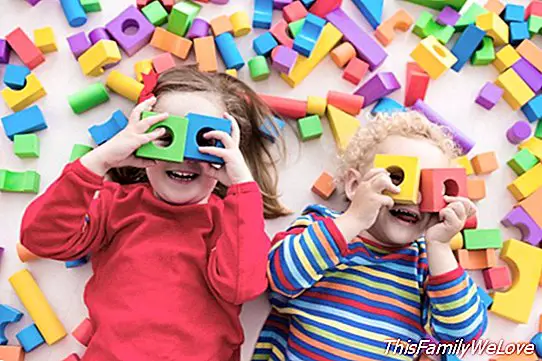Preschool games, how to get the most out of it

Playing is one of the most important activities in the child's development since it directly influences this process. The toys they enter the scene to accompany, be touched and watched, to discover a world to the smallest through their senses. As children grow and interact with them, they become learning tools.
Therefore it is recommended that parents get involved in these activities to participate in the development of their children and try to get the most out of them. Each age has special or differential aspects according to the psychoevolutive state of the child.
What is a toy and what is not for preschool children
Inside the home and outside of it there are many everyday objects that in the hands of children, become playful elements, in toys. For example a pencil can be transformed to serve for this purpose by making believe that the smallest are clerks or emulate the work of their parents.
Parents should be alert since not any object is apt to become a toy. In some cases these gadgets They can be potentially dangerous for these purposes. An example are those powered by electric current, or with, with sharp edges or cutting edges, materials with non-homologated paint and dyes.
From the Spanish Association of Pediatrics and Primary Care, AEPap, it is indicated that up to three years more strict attention is needed, both in these objects and in the toys acquired. In the labeling must be visible, legible and indelible that complies with the regulations on safety. And also the symbology that indicates whether parts or components are a risk for children under that age.
Parents must read carefully all the information that accompanies the toy. The instructions for use should be followed and once the purchase has been unpacked, check that it is in good condition as well as monitor the development of the game.
Recommended toys for preschool children
AEPap indicates the following tips so parents can get the most out of the game in preschoolers. Between the 2-5 years a development takes place in which they acquire cognitive, motor and linguistic abilities. Some of these skills are: speech and comprehension of oral language, expression of emotions, greater gross and fine psychomotor development, discovery of the family and social environment, and symbolic play and with peers, among others.
For the characteristics of the development own of these ages must be taken into account toys of gross movements (tricycles, bicycles, slides) and fines (plasticine, mechanics, construction), to express themselves and imagine (blackboards, paintings, musical instruments, puppets, costumes), dolls, characters or animals (families of them), puzzles, and simple table games to share with peers.
At the same time, we must offer the children spaces at home and outdoors: on the beach or the pool, in the countryside, parks, etc., to play. There they can develop the imitation of their peers, their fantasy, creativity and the shared game with rules, norms and moral values. The game is always intellectual, emotional and social development.
Damián Montero




